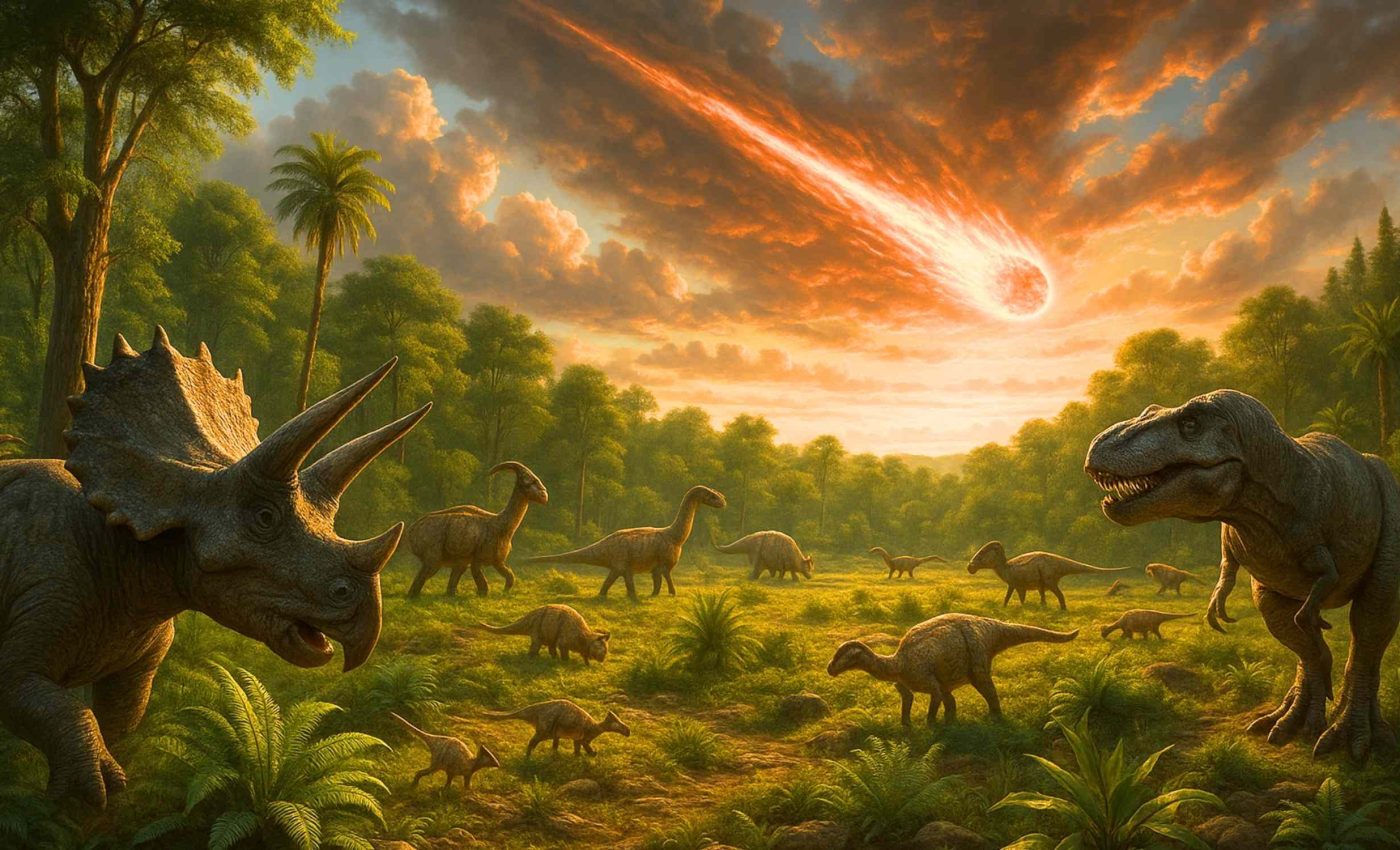
Study claims that dinosaurs thrived until the asteroid hit, debunking decades of accepted beliefs
It has long been accepted that dinosaurs had dwindled in numbers before the asteroid hit. Many people believed they were already on their way out, based on the fact that fewer fossils turned up from that period.
Christopher Dean from University College London, along with an international research team, now challenges that storyline.
Their new study indicates that dinosaurs were not fading away prior to the asteroid’s impact, and that a biased fossil record skewed the data we’ve relied on for years.
Revisiting old assumptions
Previous ideas about declining dinosaur populations came from simple fossil counts. Researchers saw fewer remains toward the last part of the Cretaceous and interpreted that as the dinosaurs’ slow fade. That conclusion stuck around for decades.
Yet these authors suggest that many fossils went undiscovered because rock layers in certain regions are difficult to access or simply not preserved.
They point out that the world was changing in big ways, with mountain formations and receding inland seas reshaping the land.
Occupancy modeling approach
This work centers on occupancy modeling, an ecological method that helps scientists estimate the presence of species, even when evidence is incomplete.
The researchers took thousands of fossil records covering hadrosaurs, ceratopsians, ankylosaurids, and tyrannosaurids. They then calculated how likely it was to find traces of these animals across North America.
The results were surprising. Instead of confirming a genuine decline in dinosaur variety, the team found that the apparent reduction lined up with spots where fossils had a slim chance of surviving or being unearthed.
Why the numbers looked off
The study singled out geological factors as the real culprits behind the missing dinosaur evidence. Changes in land elevation and the retreat of a shallow sea reduced places where dinosaur bones could be buried and preserved.
Much of that land is now covered by vegetation, buildings, or other features that hide potential fossil sites.
The researchers learned that certain dinosaur groups seemed to be more easily detected than others. Some, like the duck-billed hadrosaurs, might show up better in formations we’ve explored.
Others, like the armored ankylosaurids, often turned up less, possibly because their favored habitats didn’t fossilize so well.
Rethinking extinction
This fresh perspective also implies that dinosaurs were not globally struggling before the asteroid impact. They appear to have maintained strong populations up until a catastrophic event ended everything at once.
If the asteroid had missed Earth, it’s possible that these creatures might have continued to do just fine for a much longer stretch of time.
By focusing on areas where remains had little chance to form fossils, the investigators highlight how easily scientists can be misled by blank spots in the data.
The old narrative of dinosaurs in gradual decline could be more a reflection of Earth’s changing terrain than of genuine biological trends.
An outlook on extinction risk
These findings show that surviving or vanishing isn’t always tied to a group’s natural trajectory. Sometimes it’s a wild card event, like an asteroid collision, that seals a species’ fate. The difference between lasting millions more years and disappearing overnight might boil down to pure luck.
This insight resonates with discussions around present-day biodiversity. Many modern species could be widespread and healthy, yet vulnerable to sudden environmental disasters. Fossil records teach us that success can flip to extinction if a global-scale shock arrives.
Bridging past and present
Scientists are now more cautious when interpreting gaps in ancient records. The notion of consistent and smooth data through time is flawed.
Much like detectives, paleontologists have to piece together scattered clues, aware that some bits are missing or distorted.
Occupancy modeling and related methods give researchers a sharper toolset. They can spot hidden patterns that once escaped notice, reshaping our view of iconic events such as the dinosaur die-off.
It appears that dinosaurs were thriving until the sky quite literally fell on them. The mismatch between earlier fossil counts and the true state of dino populations may indicate a biased rock record.
By accounting for that bias, the team provides a picture of a world that was still teeming with dinosaur life right up to the final curtain.
What this means for future fossil research
This study opens the door for broader use of occupancy modeling in paleontology. By estimating how likely it is to detect fossils under different conditions, scientists can now better separate real biological changes from sampling artifacts.
That help will help sharpen the accuracy of diversity estimates across different regions and time periods.
Going forward, this approach could reshape how researchers investigate other extinction events or global biodiversity shifts.
If similar sampling biases exist elsewhere in the fossil record, entire chapters of Earth’s history might need to be rewritten through this updated lens.
The study is published in Current Biology.
—–
Like what you read? Subscribe to our newsletter for engaging articles, exclusive content, and the latest updates.
Check us out on EarthSnap, a free app brought to you by Eric Ralls and Earth.com.
—–













